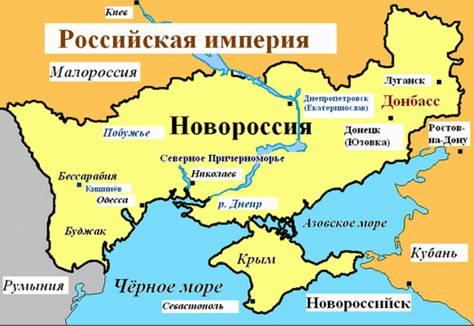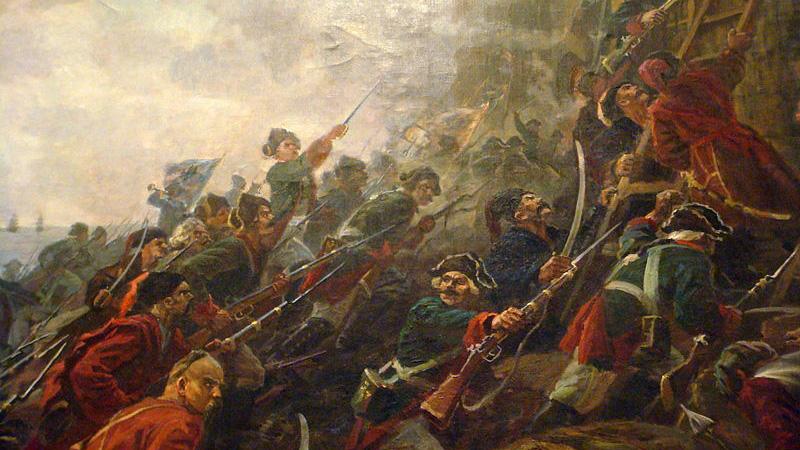Why do so many places in Ukraine and Crimea sound a bit Greek?
Russian regular troops and Cossacks storm the Turkish fortress of Khadjibey in 1789. Khadjibey was later renamed Odessa for the ancient Greek colony on the Black Sea.
Sevastopol, Simferopol, Mariupol, Melitopol. They've all been in the news recently. So what’s up with all the “-opols” in Ukraine and Crimea?
The name Sevastopol comes from two words: ‘sebastos’ is the ancient Greek adjective meaning venerable or august, and was commonly used as an honorific for royal leaders. The ‘pol’ comes from the well-known Greek noun ‘polis’ or city.
Simferopol means “city of common good.” Also Greek. Mariupol – originally Marianopol, was the city of Mary (the Saint). Melitopol is the “city of honey” — no irony intended for this now grim industrial city.
All Greek.
But there’s more. Odessa was named for an ancient Greek city on the Black Sea coast called Odessos; Kherson was named for ancient Chersonesos. Also Greek.
All these places were founded or named by Russia in the quarter century after 1774, the year that Russia forced Turkey to sign the Treaty of Kutchuk-Kainardji, ceding control of vast areas north of the Black Sea.
These areas roughly correspond to the areas of southern and eastern Ukraine that now contain large Russian minorities. Crimea held out a little longer, but the Tatar kingdom there succumbed to Russia in 1783. This region was known as Novorossiya, or New Russia.
 But why did the Russian empire decide to go Greek?
But why did the Russian empire decide to go Greek?
The name Sevastopol was chosen with two purposes in mind. One was obvious: it was a way to flatter Catherine the Great, who was Tsarina of Russia when Sevastopol was founded in 1783. The other goal was to make a connection with ancient Greece.
After the conquest and annihilation of most of the Muslim population, Russia deliberately set out to erase the geography of the Turks and Tatars. Sevastopol was once the Tatar town of Aqyar; Simferopol was Aqmescit, meaning "The White Mosque." Odessa was known as Khadjibey to the Turks.
The idea of using Greek names had several goals.
Greeks and Russians are co-religionists. They share the same Eastern Orthodox form of Christianity. The ‘duty’ to protect fellow Orthodox Christians provided Tsarist Russia with an excuse to interfere in the internal affairs of Turkey and southeast Europe.
But it was more than that.
Russia’s ruling elite had developed an affinity for all things Greek. The connection with ancient Greece lent an air of respectability, civilization and venerability to the new raw power of Russia.
Also, by accentuating the presence of ancient Greeks along the Black Sea coast, it added a degree of validity to Russia’s territorial claim to the region.
The man behind most of this was none other than Prince Grigori Potemkin.
Potemkin was a successful general, admiral and statesman, as well as the lover of Catherine the Great. His reward was to be made governor of the vast new territory of New Russia. He built a virtual state within a state, holding court, founding cities, building castles and encouraging immigration from all over the Russian empire and from as far away as Germany.
The phrase ‘Potemkin Village’ comes from the notion that when Catherine came down the Dneiper River to inspect her new realm, the Prince built the facades of villages each night and filled them with well-fed peasants, before moving them downstream the next night. His goal was to try to fool the Tsarina into thinking his colonization of the region was more successful than it really was. The source of the legend, however, is a hostile German writer, and many modern historians see it as an allegorical invention.
The memory of New Russia persists. Vladimir Putin referenced it in his long phone-in with the Russian people on Thursday. Perhaps it will be new Russia again.
